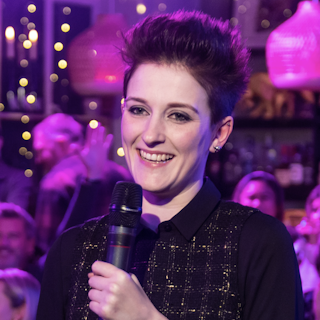Out of home will never be entirely digital says KBH managing director
KBH On-Train-Media invests a lot of work and research into how digital and traditional out of home (OOH) can work in sync. Managing director, Ian Reynolds, says that OOH will never be completely digital. He expresses that a blend of digital and traditional is the way to go, especially if there is a need for broadcast cover and frequency.

Ian Reynolds says out of home will never be 100% digital
KBH is a sponsor for The Drum Creative Out Of Home Awards, with Reynolds taking on the role of a judge. He talks to The Drum about digital and traditional partnership, how branding best works non-digitalised and how digital is driving OOH innovation.
How can digital and traditional OOH work together?
Currently at KBH our medium is in the classic box, although we expect this to change to an extent in the future. We are also working with our train operating company partners to help advertisers take advantage of increasing on-train connectivity by providing advertising opportunities on on-train wifi through one of our subsidiaries, KBH Digital.
We do a lot of work and research on how digital and traditional formats can work together, and complement each other, and of course, they do. One could argue that the two sides of our medium often do a different job, and there's no disputing the benefits of being able to switch location and messaging to put the right content in the right place, when and where you want it. But I think that OOH is still bought and planned for advertisers on the basis of impact and cover and frequency. And if this is the objective for a campaign, you need classic and digital to be bought and working together.
Over the next twelve months the industry needs to work harder to emphasise the message to advertisers that yes, different formats can be used to fulfil different jobs; equally, using both classic and digital together can also fulfil certain OOH objectives more effectively than using digital alone. This is definitely an industry point of discussion and, from our perspective, some of the most memorable campaigns prove they can and should work together.
Is there always a case to digitise?
OOH will never be 100% digital. I genuinely think that a combination of digital and classic is the best option for advertisers in many situations, especially if they need broadcast cover and frequency. If you're sharing a screen with lots of other advertisers, that frequency is going to go down and everyone knows that frequency is one of the key effectiveness measurements in advertising.
I believe there will be an optimum level of digitisation in the market and, at approaching 50%, we are probably on the brink of that now.
What works best non-digitised in OOH?
Branding. A clear, brand-focused message, which will reach the widest possible audience for a significant period of time, which they’ll see regularly and therefore remember – this is historically one of the great strengths of classic OOH and it absolutely continues to be the case.
Of course, branding campaigns can include calls to action very effectively, particularly prompts to follow up online or via social media, but the prime focus is about getting the brand to be as well known by as many people as possible.
How is the wifi data collected by KBH Digital used?
We gather first party data from the rail audience when they log onto the wifi. From that we can do a number of things.
First of all, we generate a clearer picture of who the passengers are, their demographics, where they live and their age profile; but where it gets interesting is using that data to continue the message away from the on-train environment in which they first saw our ads. Using their unique identifiers, we can continue to target them once they get off the train. We can also further segment the audience and work with additional data from other suppliers, which can only make campaigns more effective.
What has been innovating the industry in 2017?
The quality of the digital inventory now being installed on the streets, and how it helps advertisers’ messages resonate more through clever, thoughtful use of data making creative hyper-relevant, is responsible for a lot of current OOH industry innovation.
Innovation is also being driven by the continued increase in connectivity of people out and about, on the move. Encouraging consumers to go online in response to an OOH message, even from classic inventory, has certainly added a fresh new dimension to the medium, one which advertisers have really taken hold of and are using to their distinct advantage.
What do you think are the key OOH trends?
We can’t escape the fact that digital is becoming more prevalent, in more and more locations, and is the main driver of OOH industry growth, outperforming classic formats.
Alongside this, and probably as a result of it, advertisers are genuinely trying much harder to be more personal and contextual with their creative work. Three years ago, people were pretty much running a static ad on a digital display. Now the creative industry and media planners and buyers are genuinely thinking how they can use the additional capabilities delivered by digital in a much cleverer way than before.
What has been the best OOH work that you have seen?
Sainsbury's recently ran a very good campaign, “Weeknight BBQ is Living Well!” using JCDecaux's Motion and Transvision portfolios, which I experienced for myself at London Waterloo.
They used digital to target evening rail commuters featuring a live countdown to sunset. The message was contextual, timely, and reached the right audience on their way home, when they could pop into Sainsbury's on reaching their destination and make the most of the long summer evenings by having a BBQ that night.
As a judge for The Drum Creative Out Of Home Awards, what do you want to see from the entries this year?
I would like to see campaigns which make the most of the range of opportunities OOH offers, both classic and digital, and branding and activation. Activation campaigns may be easier to measure in terms of return on investment, but they can, and should, include that crucial branding element, even though I know this is much harder to measure. So, I’d like to see campaigns which have thought about the different capabilities of OOH, and made the most of them.
Why did KBH get involved with the awards?
KBH is sponsoring these awards because we believe that reaching out to the creative industry is crucial for the OOH industry. At the end of the day, every OOH campaign will live and die by how good the creative is, and there are plenty of examples I can list, from our own Traincard medium alone, where it is great.
The Drum’s awards by individual environment, rightly reward creatives for designing campaigns that consider the way each different OOH environment works, and the audience make-up and mindset reached by the campaigns run in each one. This attention to detail is what drives maximum OOH campaign effectiveness.
Reynolds is a judge for The Drum Creative Out Of Home Awards. Nominations will be announced on Friday 13 October and tables can be bought via the website.
The awards are sponsored by KBH On-Train Media, Tint, The Drum’s RAR and The Drum Network.


